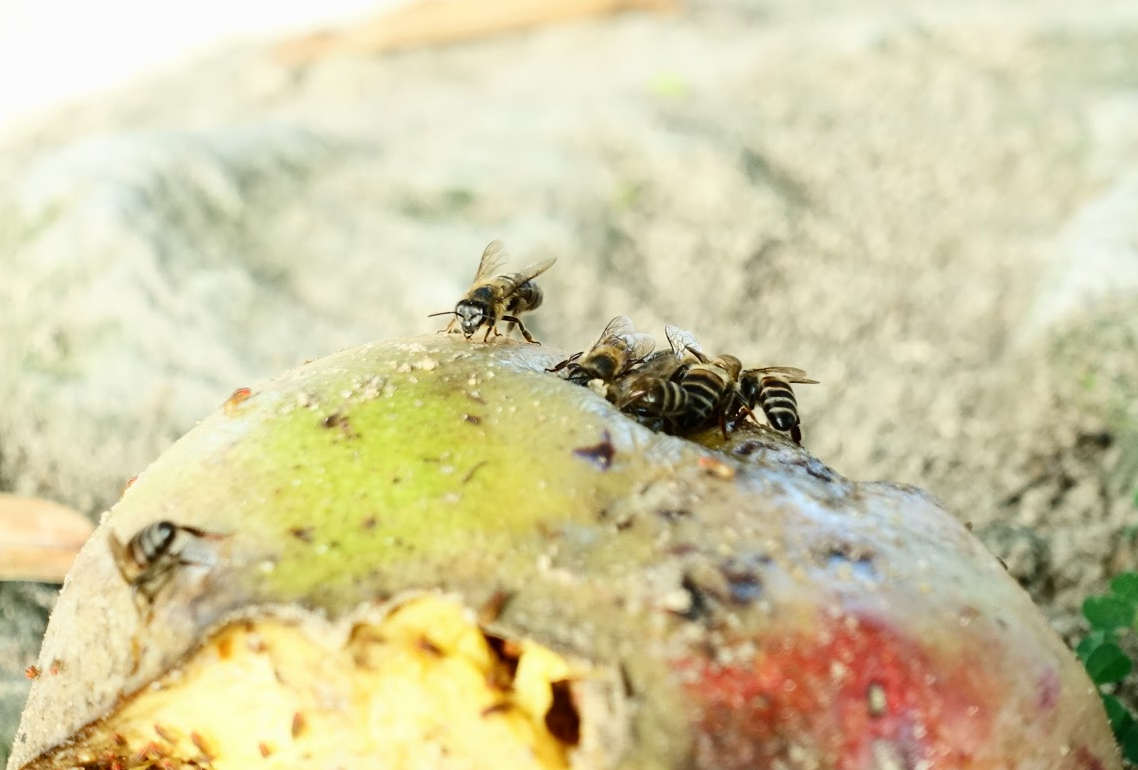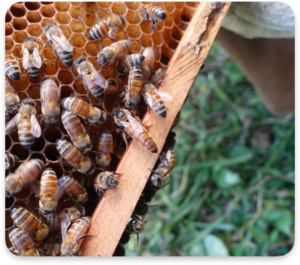案件化調査結果 1-1 〜 Result from SDGs Business Model Formulation Survey 1-1〜

Question. Compared to Japanese, Tanzanian bees have remarkable character. Which is it?
A. 圧倒的に大きい / A. Remarkably large
B. 圧倒的な繁殖力 / B. Remarkably reproductive
C. 圧倒的に凶暴 / C. Remarkably aggressive
案件化調査結果 1-1
案件化調査が去年10月に開始してから、1年が経とうとしています。大まかな調査結果が出揃い、皆さんにも共有できるところまで来ました。今日は調査結果を少しお伝えしようと思います。
今日お伝えする調査結果は、タンザニアのみつばちの攻撃性について。これまでの投稿でもタンザニアのみつばちについては、お伝えしてきました。タンザニアのみつばちの性格についてはこちらから。タンザニアのみつばちは、日本で養蜂に用いられるみつばちよりもずっと気性が荒く攻撃的なのが特徴です。
今回の調査では、タンザニアのみつばちの性格を如何に変化させるかも調査項目の一つでした。日本をはじめとする国々では、みつばちを繁殖させ世代を超えてお世話するので、どちらかというと家畜化された動物のイメージですが、タンザニアでは巣箱に住み着いたみつばちをお世話し世代を超えてお世話ができているかどうかも不明で、自然界の成り行きに任せている印象が強いです。巣箱の設置場所も開けた土地が多い日本等に比べ、タンザニアでは殆ど手付かずの森の中で養蜂を行うことが多く、みつばちは害獣・害虫に囲まれて生活しています。こうした環境的な要因が、タンザニアみつばちの非常に高い攻撃性を招いていると考えられます。
案件化調査にて、巣箱を平地に移動させ数世代に渡って飼育したところ、みつばちの性格に変化が見られました。これまでは、巣箱の蓋を開けると無数のみつばちが飛び交い、時にはアタックされたり服の上から刺されることもありましたが、平地で数世代に渡って飼育したみつばちは、蓋を開け飛び出すみつばちはいるものの、数自体は多くなくアタックや刺しに来るみつばちもいませんでした。

中央:日本の養蜂 巣箱を開けてもみつばちが飛び交っている様子はあまり見られません
右:タンザニアにて巣箱を平地へ移動させた養蜂 日本の養蜂と同様、巣箱を開けてもみつばちが飛び交っている様子はあまり見られません)
ということで、クイズの答えは、”C. 圧倒的に凶暴 “でした。次回は、この変化が私たちの養蜂にどのような効果があるのかをお伝えします!お楽しみに〜
Email: gifutoshop@nisshin-honey.co.jp
もしくはこちらから>>> https://nisshin-honey.co.jp/mail/
Result from SDGs Business Model Formulation Survey 1-1
It has been almost one year since we started SDGs Business Model Formulation Survey by JICA in Oct. 2022. We have gotten rough results. Today I am very happy to share a part of them.
Today’s topic is about aggressiveness of Tanzanian bees’. As I have already written about its nature, aggressiveness, click here to see how fierce they are, Tanzanian bees are much more aggressive than bees in Japan.
It is one of our purposes of survey to see how harmless fierce bees get. In countries like Japan bees are bred and taken care over generations, which is, bees are rather domesticated animals, while in Tanzania wild bees settle in the hive Tanzanian beekeeper hung from a tree. The beekeeper are probably not sure whether they take care bees over generations. Compared to former countries, the beekeeping sounds more along with nature. When it comes to the installment place, in the former hives are mainly placed at plain lands while in the later placed in internal forests. Bees in Tanzania live surrounded by vermin. These external conditions may affect nature of the highly fierce character.
In this survey we shifted sets of hives to a plain land from a forest and took care over generations. And we have seen change in nature of them. In Tanzania it is quite usual that we face the situation with the massive number of bees whirling around and some coming toward us to attack and even sting us through the clothes. In contrast, bees bred over generations at plain lands actually whirl around the hive when the lid opened, but the number is much smaller than the former group, and they do not come toward us to sting, and even to attack.

Middle:Beekeeping in Japan Even the lid opened, there is the much smaller number of whirling bess.
Righ:Beekeeping with hives migrated to plain land Like in Japan, even the lid opened, there is the much smaller number of whirling bess.)
So the answer to the question is “C. Remarkably aggressive.” Next time I will tell you what the eased character brings to our beekeeping. Thank you for reading today. See you soon!
Contact
Email us at gifutoshop@nisshin-honey.co.jp

